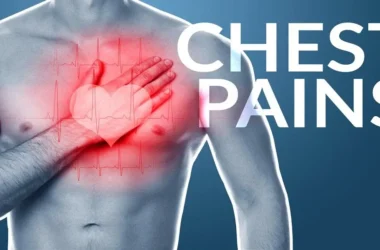Whooping cough, also known as pertussis, is a highly contagious respiratory disease that affects individuals of all ages.
This article dives deep into the nature of whooping cough, its symptoms, treatment options, and preventive measures.
Join us as we unravel the complexities of this disease and equip you with the knowledge to protect yourself and your loved ones.
What is Whooping Cough?
Whooping cough, or pertussis, is an infection caused by the bacterium Bordetella pertussis. It is characterized by severe coughing spells that can last for weeks or even months.
The “whoop” sound that gives the disease its name occurs when the person breathes in after a coughing fit.
Historical Context of Whooping Cough
Historically, whooping cough was a major cause of childhood illness and death. Before the introduction of the pertussis vaccine in the mid-20th century, it was common and often deadly.
Also Read: Understanding POTS: Symptoms, Causes, and Treatment
Despite vaccination efforts, whooping cough remains a significant health concern due to periodic outbreaks and waning immunity over time.
Symptoms of Whooping Cough
The symptoms of whooping cough can be divided into three stages: the catarrhal stage, the paroxysmal stage, and the convalescent stage.
Catarrhal Stage
- Duration: 1-2 weeks
- Symptoms:
- Runny nose
- Mild fever
- Mild, occasional cough
- General malaise
Paroxysmal Stage
- Duration: 1-6 weeks (sometimes up to 10 weeks)
- Symptoms:
- Severe coughing fits
- Whooping sound when inhaling
- Vomiting after coughing
- Exhaustion after coughing episodes
Convalescent Stage
- Duration: 2-3 weeks
- Symptoms:
- Gradual recovery
- Less frequent coughing spells
- Persistent but milder cough
How Whooping Cough is Diagnosed
Diagnosing whooping cough involves a combination of clinical evaluation and laboratory tests. Healthcare providers often suspect pertussis based on the characteristic cough and patient history. To confirm the diagnosis, the following tests may be used:
Laboratory Tests
- Polymerase Chain Reaction (PCR) Test: Detects bacterial DNA from a nasal or throat swab.
- Culture Test: Grows the bacteria from a sample to confirm the presence of Bordetella pertussis.
- Serology Test: Measures antibodies against pertussis in the blood.
Treatment Options for Whooping Cough
While whooping cough can be severe, especially in infants and young children, several treatment options are available to manage symptoms and prevent complications.
Antibiotics
- Macrolides (e.g., Azithromycin, Clarithromycin): Reduce the severity of symptoms and the contagious period if administered early in the course of the disease.
- Trimethoprim-sulfamethoxazole: An alternative for patients who cannot tolerate macrolides.
Supportive Care
- Hydration: Ensuring adequate fluid intake to prevent dehydration.
- Rest: Providing a calm environment and sufficient rest to aid recovery.
- Nutritional Support: Offering small, frequent meals to maintain energy levels.
Hospitalization
In severe cases, especially for infants and those with complications, hospitalization may be required for close monitoring and supportive care, such as oxygen therapy and intravenous fluids.
Preventing Whooping Cough
Prevention is key in controlling the spread of whooping cough. Vaccination is the most effective preventive measure.
Vaccination
- DTaP Vaccine: Administered to children under 7 years old. It protects against diphtheria, tetanus, and pertussis.
- Tdap Vaccine: Given to older children, teenagers, and adults. It serves as a booster to maintain immunity.
Herd Immunity
Vaccination not only protects the individual but also contributes to herd immunity, reducing the overall prevalence of the disease in the community.
Booster Shots
Since immunity wanes over time, booster shots are recommended for:
- Adolescents (11-12 years old)
- Pregnant women (during each pregnancy)
- Adults who did not receive Tdap as a teenager
Infection Control Measures
- Isolation of Infected Individuals: To prevent the spread to others, especially vulnerable populations.
- Hand Hygiene: Regular hand washing with soap and water or using hand sanitizer.
- Respiratory Etiquette: Covering the mouth and nose with a tissue or elbow when coughing or sneezing.
Complications of Whooping Cough
Whooping cough can lead to serious complications, particularly in infants and those with underlying health conditions.
Common Complications
- Pneumonia: Bacterial infection of the lungs.
- Dehydration: Due to vomiting and difficulty in eating or drinking.
- Weight Loss: From prolonged illness and feeding difficulties.
Severe Complications
- Seizures: Due to hypoxia or brain involvement.
- Brain Damage: From prolonged lack of oxygen during severe coughing fits.
- Death: Particularly in infants who are too young to be fully vaccinated.
Living with Whooping Cough
Managing whooping cough involves not just medical treatment but also lifestyle adjustments to support recovery and prevent transmission.
Home Care Tips
- Maintain a Calm Environment: To reduce stress and prevent exacerbation of symptoms.
- Monitor Breathing: Keep an eye on any signs of difficulty in breathing or worsening symptoms.
- Follow Medication Schedules: Ensure antibiotics and any other prescribed medications are taken as directed.
Support Networks
- Family and Friends: Provide emotional and practical support during the illness.
- Healthcare Providers: Regular check-ups to monitor progress and manage complications.
Whooping Cough in Infants and Young Children
Infants and young children are particularly vulnerable to whooping cough, and special care is needed to protect them from this disease.
Symptoms in Infants
- Apnea: Pause in breathing.
- Cyanosis: Bluish color of the skin due to lack of oxygen.
- Feeding Difficulties: Inability to nurse or take a bottle.
Protecting Infants
- Vaccinate Family Members: To create a cocoon of protection around the baby.
- Avoid Exposure: Keep infants away from anyone with a cough or respiratory infection.
Whooping Cough in Adults
Whooping cough can be milder in adults, but it still poses significant risks, especially to those with weakened immune systems or chronic health conditions.
Recognizing Symptoms in Adults
- Persistent Cough: Lasting weeks, sometimes without the classic “whoop.”
- Weight Loss: From prolonged illness and coughing spells.
- Secondary Infections: Such as pneumonia or bronchitis.
Preventive Measures for Adults
- Stay Up-to-Date with Vaccinations: Including Tdap boosters.
- Practice Good Hygiene: Hand washing, covering coughs, and avoiding close contact with sick individuals.
Global Impact of Whooping Cough
Whooping cough remains a public health concern worldwide, with periodic outbreaks even in countries with high vaccination coverage.
Epidemiology
- Global Burden: Millions of cases reported annually, with significant mortality in low-income countries.
- Vaccination Campaigns: Ongoing efforts to increase vaccine coverage and protect vulnerable populations.
Challenges
- Vaccine Hesitancy: Misinformation and fear of vaccines reduce immunization rates.
- Waning Immunity: Need for booster doses to maintain protection.
Research and Innovations
Ongoing research is vital to improving whooping cough prevention, diagnosis, and treatment.
Vaccine Development
- New Vaccines: Efforts to develop more effective and longer-lasting vaccines.
- Combination Vaccines: To simplify immunization schedules and improve coverage.
Diagnostic Advances
- Rapid Testing: Development of quicker and more accurate diagnostic methods.
- Point-of-Care Testing: To facilitate early diagnosis and treatment, especially in resource-limited settings.
Treatment Innovations
- Antibiotic Resistance: Monitoring and addressing resistance patterns to ensure effective treatment.
- Adjunct Therapies: Exploring additional treatments to reduce symptoms and complications.
Conclusion
Whooping cough is a serious respiratory disease that requires vigilance in prevention, timely diagnosis, and effective treatment.
By staying informed about vaccination schedules, recognizing symptoms, and implementing infection control measures, we can protect ourselves and our communities from this persistent threat.




